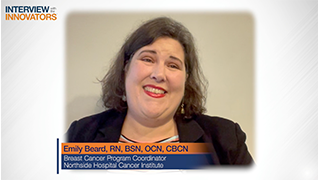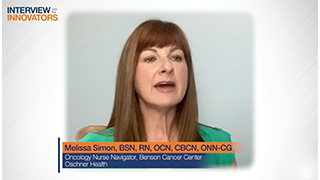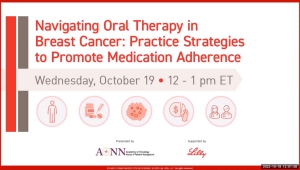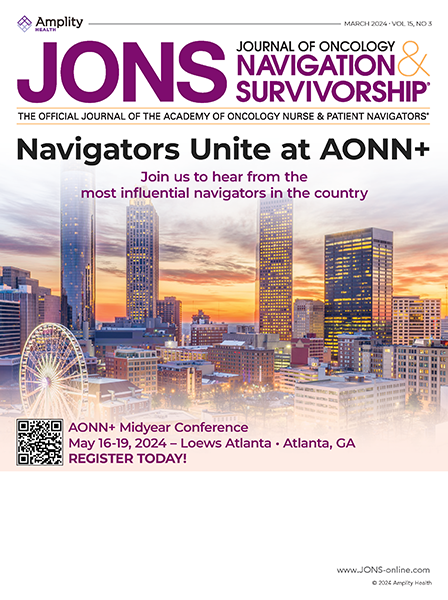Video Library
To conclude this series, our seasoned panel describes how clinical trial and practical experiences with antibody drug conjugate therapy for mBC instill their confidence in this therapy.
Please join Sara Tolaney, MD, MPH, Dana-Farber Cancer Center, Boston, MA; Erica Stringer-Reasor, MD, University of Alabama, Birmingham; and Matteo Lambertini, MD, PhD, University of Genoa, Italy, as they provide expert commentary on key breast cancer abstracts presented at the 2023 ASCO Annual Meetings that will impact young women with ER+/HER2- breast cancer.
Hear from two breast cancer nurse navigators, Emily Beard, RN, BSN, OCN, CBCN, and Melissa Simon, BSN, RN, OCN, CBCN, ONN-CG, on the progress made in educating patients on when to start ovarian function suppression and the recommended duration of therapy.
This Interview with the Innovator video features breast cancer nurse navigators Emily Beard, RN, BSN, OCN, CBCN, and Melissa Simon, BSN, RN, OCN, CBCN, ONN-CG, as they discuss ovarian function suppression, how patients tolerate side effects, and educating patients on expectations of treatment.
Emily Beard, RN, BSN, OCN, CBCN, and Melissa Simon, BSN, RN, OCN, CBCN, ONN-CG, examine fertility issues associated with ovarian function suppression and the psychosocial impact it has on young breast cancer patients.
This Interview with the Innovator video features two breast cancer nurse navigators, Emily Beard, RN, BSN, OCN, CBCN, and Melissa Simon, BSN, RN, OCN, CBCN, ONN-CG, reviewing combination therapy with ovarian function suppression and its effects in breast cancer patients, including the importance of setting up-front expectations of treatment.
Emily Beard, RN, BSN, OCN, CBCN, and Melissa Simon, BSN, RN, OCN, CBCN, ONN-CG, highlight the challenges with ovarian function suppression side effects patients face and explore tactics to encourage adherence to treatment.
Gain insights from Emily Beard, RN, BSN, OCN, CBCN, breast oncology nurse navigator, in this Interview with the Innovator video on communication techniques to discuss sensitive topics with breast cancer patients including sexual health dysfunction associated with ovarian function suppression.
In this Interview with the Innovator video, Melissa Simon, BSN, RN, OCN, ONN-CG, and Emily Beard, RN, BSN, OCN, CBCN, discuss common and expected side effects with ovarian function suppression as well as adverse side effects to monitor and report to a healthcare provider.
The Academy of Oncology Nurse & Patient Navigators (AONN+) and Eli Lilly and Company Medical Affairs are pleased to present a live webinar designed to facilitate conversations with patients regarding adherence to breast cancer treatments. Attendees will have an opportunity to participate in a live Q&A following the presentation.
Dr Steven Rowe continues his discussion of PYLARIFY® (piflufolastat F 18) imaging, with a focus on results from the OSPREY clinical trial in pre-prostatectomy patients.
Dr Steven Rowe continues his discussion of PYLARIFY® (piflufolastat F 18) imaging, with a focus on results from the OSPREY clinical trial in pre-prostatectomy patients.












